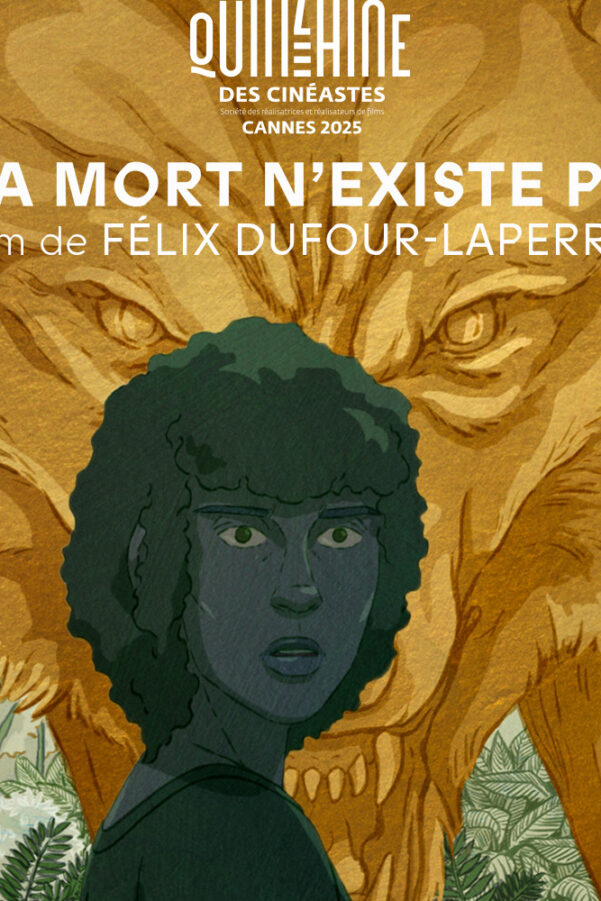Death Does Not Exist

Opening with a failed armed assault by a group of young activists on a wealthy family estate, Félix Dufour-Laperrière’s animated feature Death Does Not Exist (La mort n’existe pas) follows Hélène, who hesitates at the crucial moment and flees, leaving her companions to die. Haunted by the ghost of her fallen friend Manon, Hélène slips into a liminal state where trauma, memory and hallucination bleed into one another and the narrative begins to float in a dreamlike haze of reckoning and remorse.
Visually, the film’s experimental instincts pay off. The choice to have human and animal figures dissolve into the tones of their surroundings produces a particularly uncanny effect – creating an eerie fusion of body and background that leaves a lingering sense of unease. Characters fade into their environment quite literally, blurring the line between person and place, dreams and reality – a striking metaphor for Hélène’s psychological unraveling. This literal blurring of lines becomes a poignant metaphor for Hélène’s slow psychological disintegration and a haunting reminder of how memory and identity can erode under the weight of guilt. Colour, too, is deployed not merely for atmosphere but with clear symbolic intent: scenes awash in gold evoke the arcane rituals of Greek mythology while earthy greens and muted beiges chart Hélène’s withdrawal into nature.
But for all its boldness of vision, the movie struggles to anchor its ideas. It deliberately withholds context: we know little about the elites being targeted and even less about the deeper motivations of the young radicals. What is being resisted? What has been lost? In its pursuit of ambiguity, Death Does Not Exist drifts into vagueness. The politics remain gestural, never fully formed. Lines like “No one can say we didn’t try” have the ring of tragic defiance, but without ideological grounding, they feel hollow.
Still, Dufour-Laperrière’s ambition is unmistakable. His depiction of flesh – whether in the raw trauma of bullet wounds or the grim detail of animal remains – is rendered with unnerving precision, grounding the film’s abstraction in something brutally tangible. Even in a world this stylised, violence is never weightless; it leaves traces, both physical and psychological. In the end, Death Does Not Exist functions more persuasively as a meditation on memory and mourning than as a political statement: enigmatic, unsettling and often visually arresting – even if it never quite finds solid ground beneath its ideas.
Christina Yang
Death Does Not Exist does not have a release date yet.
Read more reviews from our Cannes Film Festival coverage here.
For further information about the event visit the Cannes Film Festival website here.



























Facebook
Twitter
Instagram
YouTube
RSS